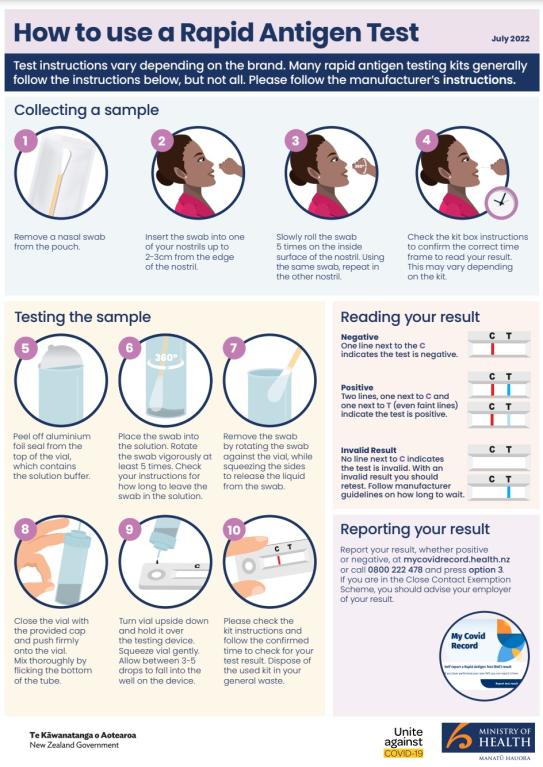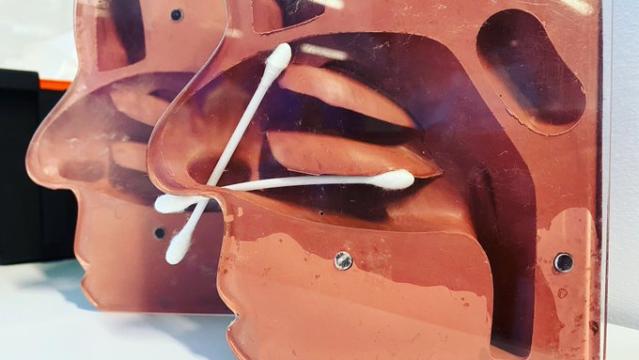A video by ENT surgeon Dr Eric Levi, explaining how to do a rapid antigen test on a child
Source: Dr Eric Levi
What is a rapid antigen test (RAT)
A rapid antigen test is a test that checks if someone has COVID-19.
Results are available in about 20 minutes and sometimes sooner.
How to get your child tested for COVID-19
Use a RAT test if your child has COVID-19 symptoms, or any cold or flu symptoms. The most common symptoms are a cough, sneezing, runny nose and a fever.
COVID-19 - Caring For A Child With COVID-19
Where can my child get a rapid antigen test?
You can purchase RATs from community pharmacies and retail stores such as supermarkets. Your healthcare provider may offer COVID-19 tests. Call them to find out and follow their advice. There may be a charge.

To learn more about COVID-19 testing visit the Health New Zealand website.
How to use a rapid antigen test
A rapid antigen test usually uses a front of the nose swab which detects specific proteins from the COVID-19 virus.
There are different tests available, so make sure you follow the manufacturer's instructions.
Guidance on using a rapid antigen test

Source: Health NZ Te Whatu Ora
Learn how to do a rapid antigen test by watching this video of Dr Rachelle Love and Ruby.
Source: Hāpai Te Hauora and Counties Manukau District Health Board
Swabbing the nose
ENT surgeon Dr Eriv Levi posted this image with advice on where to swab the nose.
The nose goes back, not up. Aim for the back, not for the brain.

A photo of a model showing the inside of the nose and the right place and wrong place to put a nasal swab.
Keep all rapid antigen tests in a place young children can't reach. Store them according to the manufacturer's instructions.
What to do after your child has tested for COVID-19
Report the test result whether your child has tested positive or negative for COVID-19.

For up-to-date information on COVID-19 testing including how to report results, visit the Health New Zealand Te Whatu Ora website.
Testing negative but feeling positive?
You can read a quick guide to why some people who return a negative rapid antigen test result may still be infected - and infectious. The guide is written and illustrated by Siouxsie Wiles and Toby Morris and is on the Spinoff website.
Read the quide on the Spinoff website
